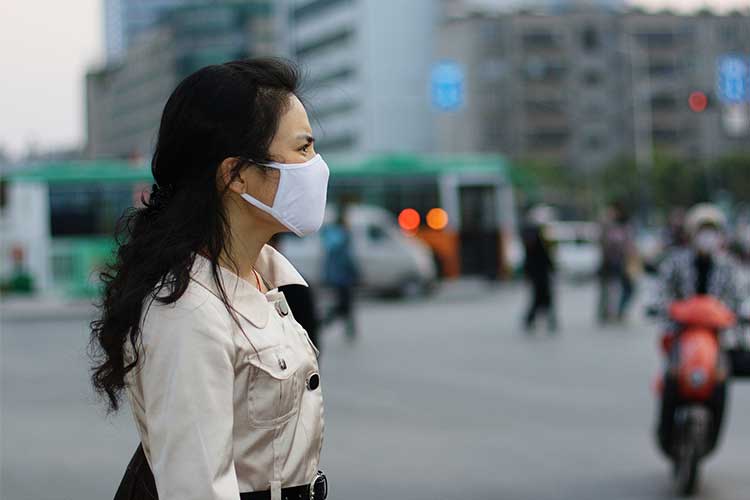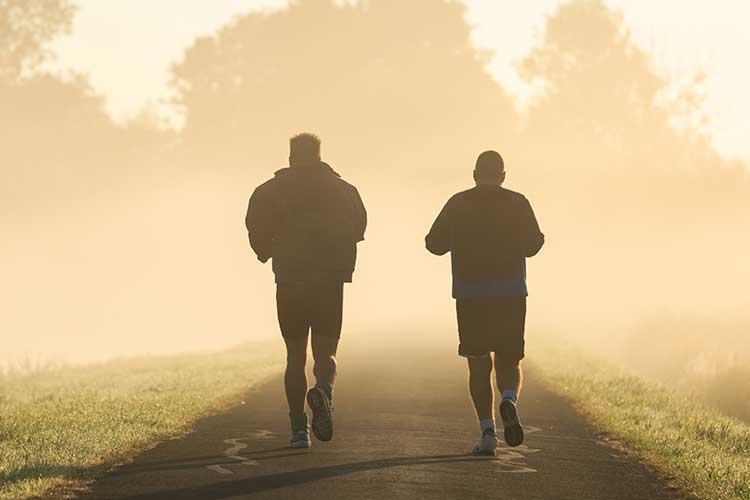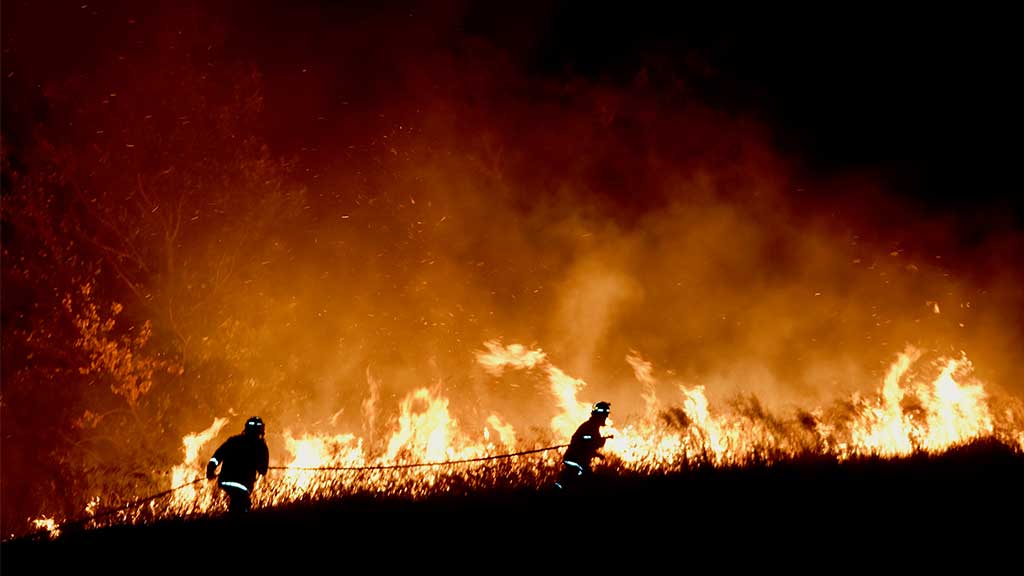On the morning of the 14th of January 2020, Melbourne’s air quality was rated as the worst in the world.
Smoke covered Melbourne as wind pushed it across from bushfires in East Gippsland and the northeast of the state.
For two days, Melbourne’s air quality received a rating of hazardous from the Environmental Protection Agency Victoria.
From midnight to 11 am on the 14th of January 2020, Ambulance Victoria received 110 callouts from people who were experiencing breathing difficulties - these numbers were 66% higher than average (Woodley 2020).

What Are the Known Health Complications of Poor Air Quality?
Associate Professor Louis Irving, head of the Respiratory Service at the Royal Melbourne Hospital, explained that part of the danger is that the smoke carries suspended particles that can irritate the lungs and airwaves when inhaled, causing breathing problems and possible asthma attacks (Irving, as cited by Waters 2020).
These particles can also be absorbed into the blood, having the potential to cause cardiac arrest (Waters 2020).
Associate Professor of Life Sciences at the University of Technology Sydney, Brian Oliver, explained that Melbourne’s smoke particle pollution (known as PM2.5) was equivalent to lighting up 20 cigarettes when it reached 412 on the morning of the 14th. It was comparable to lighting 50 cigarettes in Box Hill, where it reached 1000 (Waters et al. 2020).
Who Should Be Particularly Cautious?
- People with lung conditions such as asthma and chronic bronchitis
- People who are pregnant
- People who are over the age of 65 or under the age of 14.
(Waters 2020; Woodley 2020)
People who are pregnant are particularly vulnerable as they breathe at an increased rate, and their hearts have to work harder than those who are not pregnant to transport oxygen to the fetus (Robertson & Hull 2020).
For people who are pregnant, prolonged exposure to poor air quality can lead to:
- Low birth-weight
- Premature birth of the child
- High blood pressure
- Gestational diabetes.
(Woodley 2020; Robertson & Hull 2020)

These conditions have both short and long-term side effects on babies. This includes the child having an increased risk of developing cerebral palsy and visual and hearing impairment (Robertson & Hull 2020).
People who are pregnant should seek medical advice if they experience signs of premature labour, including abdominal cramps or contractions, heavy vaginal discharge, loss of fluid or vaginal bleeding, pelvic pressure and backache (Robertson & Hull 2020).
At these levels of pollution, even people without medical conditions, including young people, should not be voluntarily exerting themselves to high levels of ventilation outdoors (Irving, as cited by ABC News 2020).

Precautions to Take
For high-risk groups, the best strategy is to reduce exposure to smoke as much as possible. This means staying indoors on days with very poor to hazardous air quality, sealing the house to prevent smoke from coming in, and using reverse cycle air conditioners in the home (Lyons 2020; Robertson & Hull 2020).
Avoid creating smoke by lighting cigarettes, burning candles and frying or grilling (Hull 2020), and avoid strenuous outdoor exercise (Waters 2020).
People who are pregnant and live in a fire region should follow the instructions of emergency services. It’s advised to evacuate fire-affected regions as soon as possible with an emergency supply kit containing clothes, medications, water and food that doesn’t need to be cooked (Robertson & Hull 2020).
Going Forward
A study released by the British Heart Foundation found that in the next decade, over 160,000 people are expected to die from strokes and heart attacks related to air pollution (PA Media 2020).
Executive Director Jacob West explains that every day, millions of us breathe in toxic particles, which enter our blood and stick to our organs - raising the likelihood of cardiac-related illness (PA Media 2020).
Climate scientists predict the catastrophic bushfires in Australia are a sign of what is to come around the world if temperatures are permitted to rise further. A rise beyond 2C would see catastrophic and irreversible climate breakdown (Harvey 2020).

Conclusion
Remember, the closer you are to the source of the smoke, the worse it is. There is no safe level of air pollutants. If possible, the safest option is to keep away and reduce your exposure.
Topics
References
- ABC News 2020, 'Melbourne Air Quality Drops to “Hazardous” Levels as Victoria Faces “New Reality” of Smoke Pollution', ABC News, 15 January, viewed 15 January 2020, https://www.abc.net.au/news/2020-01-15/melbourne-air-quality-could-return-to-hazardous-bushfire-smoke/11867796
- Australian Associated Press 2020, ‘Melbourne's Air Quality “Worst in the World” as Bushfires Continue to Burn Across Victoria’, The Guardian, 14 January, viewed 29 January 2024, https://www.theguardian.com/australia-news/2020/jan/14/melbourne-choked-by-hazardous-smoke-as-bushfires-continue-to-burn-across-victoria
- Harvey, F 2020, ‘Australia Fires Are Harbinger of Planet’s Future, Say Scientists’, The Guardian, 14 January, viewed 29 January 2024, https://www.theguardian.com/australia-news/2020/jan/14/australia-bushfires-harbinger-future-scientists
- Lyons, S 2020, ‘From Air Purifiers to DIY Hacks: What are the Best Ways to Try to Keep Your Home Smoke-Free?’, ABC News, 11 January, viewed 29 January 2024, https://www.abc.net.au/news/science/2020-01-11/keeping-your-home-smoke-free/11857898
- PA Media 2020, 'Air Pollution Could Kill 160,000 in Next Decade - Report', The Guardian, 13 January, viewed 29 January 2024, https://www.theguardian.com/environment/2020/jan/13/air-pollution-kill-160000-next-decade-report
- Robertson, S & Hull, L 2020, ‘Pregnant Women Should Try to Stay Inside When the Air Pollution is High', The Conversation, 9 January, viewed 29 January 2024, https://theconversation.com/pregnant-women-should-take-extra-care-to-minimise-their-exposure-to-bushfire-smoke-129349
- Waters, C 2020, ‘CBD Haze Returns to Melbourne as the City and Suburbs Cope with Air Pollution’, Herald Sun, 14 January, viewed 29 January 2024, https://www.heraldsun.com.au/news/cbd-haze-set-to-linger-in-melbourne-for-days-as-city-copes-with-air-pollution/news-story/d9b60cbe76d1348e4b0a21bffeb0bac1
- Waters, C, Fagan, J & Frost, A 2020, ‘Air Quality “Very Poor” as Smoke Haze Chokes Melbourne for Third Day in a Row’, Herald Sun, 16 January, viewed 29 January 2024, https://www.heraldsun.com.au/news/victoria/air-quality-very-poor-as-smoke-haze-chokes-melbourne-for-third-day-straight/news-story/4212676bcc979e82df03f974c196d118
- Woodley, M 2020, ‘“Hazardous” Melbourne Air Considered the Worst in the World’, newsGP, 14 January, viewed 29 January 2024, https://www1.racgp.org.au/newsgp/clinical/hazardous-melbourne-air-considered-worst-in-the-wo
 New
New 
